Viewers Overwhelmed with Entertainment Options

This is going to come as a terrible shock to the gals/guys who run the content creation/production/distribution companies as well as their financial/industry analysts and stockholders.
There are folks on this planet who don’t go to movie theaters, watch appointment TV or stream their entertainment.
It’s true!
- There are about 8B people on the planet, according to Worldometer
- There are about 200K cinema screens worldwide – 65.5K in China, 40K in the US, 12K in India, 3.5 in the UK
- The Numbers estimates 1B tickets will be sold this year, way down from the industry’s high of 1.5T sold in 2002 but still good
- Statista estimates there are about 1.8B TV households worldwide
- Kagan estimates there are about 1B appointment TV households in the world, slipping in the US but growing in emerging countries
- It has been estimated that there will be nearly 2B VOD users by 2027 with user penetration to increase from this year’s 19 percent to 24 percent in 2027
- There is an estimated 200 + streaming video services worldwide with the largest being Netflix, iQiyi, Disney+, Tencent Video, Amazon Prime Video, Viu and Hulu
But … beyond going to movies and viewing content on their screen (smartphone, computer, TV); people have other things to do.
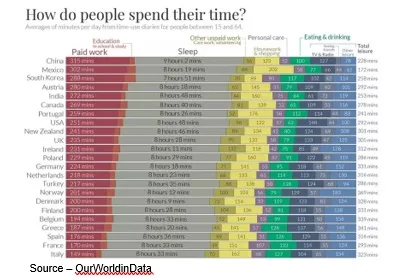
People must work, go to school/study, take care of themselves and their families (exercise/personal care), eat, do household chores/shop, check their social media, do what Netflix Reed Hastings once said was his major competition – sleep – and you know, just kick back/unwind.
How totally inconsiderate!
Don’t they realize the content industry has to make money? … lots of money.
Despite the lack of cooperation by the content consuming public:
- The US movie industry is worth about $92B, according to IBISWorld
- The global TV market was valued at about $183B last year, according to Imarc, with growth in emerging countries – APAC, Africa – but decline in the Americas, Europe
- The VOD market is projected to reach nearly $95B this year, according to Statista, with an annual CAGR (compound annual growth rate) of nearly 11 percent through 2027 with an ARPU (average per user) of about $64.
The growth potential is what keeps tech organization, studio and content distributor bosses/CFOs pushing to get their unfair share of the market.
Despite their momentary setback, Netflix may still be the leader in revenue, but Disney has just surpassed them with new subscribers. With Netflix’s subscriber base slipping to slightly under 222M, it is looking to offer new options – subscription, ad-supported and FAST. In fact, the company partnered with Microsoft to launch its ad-supported services early next year.
At the same time, they – and all streaming service providers – continue to invest in new content around the globe.
Netflix really doesn’t have a choice.
First of all, if they want to deliver content to people in the 190 countries they serve, governments have said 30-40 percent of the content must be produced regionally.
In addition, in every country and on every screen, people really want to watch people who look like them, talk like them and in familiar surroundings.
More importantly, people in various parts of the world have different entertainment tastes.

Not everyone likes action, horror, drama or comedy. Even in the specific genre, some stories/movies/shows are just more appealing to folks than others.
So, the investment in new, unique content continues for the streamers that want to attract/retain subscribers.
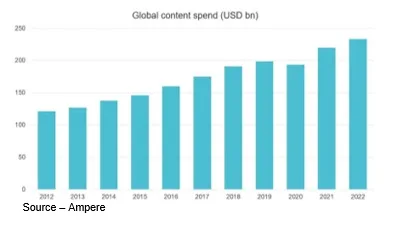
Because of this push to win new viewers, Deloitte’s Kevin Westcott, noted, “Consumers now enjoy unparalleled freedom in selecting M&E options and their expectations are at an all-time high.”
While Netflix’s slowing growth has caused most of Hollywood to reevaluate their all-in approach, Amazon Prime Video/FreeTV and Apple TV+ maintain their focus on steady investment/growth because content is part of their overall long-term product/services strategies.
Disney continues its streaming investments in its Marvel/Disney/20th Century Studios, Pixar, Lucasfilm and other entertainment studio/franchise mix.
The long-term view has helped the company rack up 221M subscribers with its Disney+, Hulu, Disney+ Hotstar and ESPN+ services, inching ahead of Netflix.
We see mixed messages coming from the Mouse House with its 40 percent SVOD price increase and ad-supported tiers that will be in place by the end of the year.
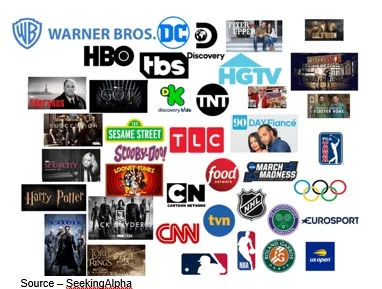
In the meantime, WBD’s (Warner Bros Discovery) David Zaslav and his new management team are busy tearing apart, putting together, focusing, refocusing, scheduling and unscheduling its DC Universe/Warner Bros Pictures activities.
The work promises … something better.
In addition, it’s developing a ten-year plan for its theatrical, appointment TV and streaming services.
Committed to deliver no film to theaters/services before its time, the company is also intent on building a new set of tiered price services out of its HBO Max, Discovery+ streaming services which will have soft rollouts in 2023/24.
While the Chinese streaming market is largely unavailable to outside services, that doesn’t mean that the country’s Big Three video services (iQiyi, Youku, Tencent ) don’t have ambitions beyond the country’s borders.
At the same time Netflix and Disney+ have their sights set on increased cross content/service relationships with China’s Big Three, despite some censorship and the removal of certain movies/shows.
This will expand the two services’ reach into the $20B plus Middle Kingdom market and will provide them with authentic content for the large market of Mandarin-speaking viewers around the globe.
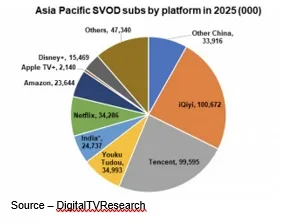
In addition to China’s estimated 269M streaming market, APAC (East/South/Southeast Asia and Oceania) has a potential of more than 500M subscription/ad-supported streaming video viewers.
The overall APAC market is on course to generate more than $49B in revenue and is expected to grow at an annual 8 percent compound annual growth rate to $72.7B by 2027.
The market potential is fine but … the industry doesn’t need more content.
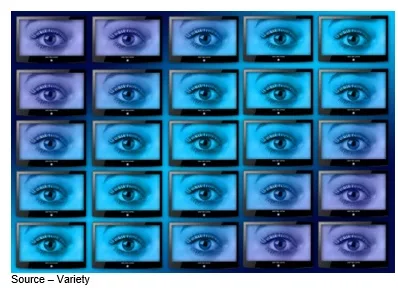
It needs more active eyeballs.
According to Nielsen, there were more than 700K unique movies/shows to watch last year across network/cable/streaming services. About 16 percent were available on linear TV while the majority – about two-thirds – were available over OTT services.
Streaming usage has nearly doubled over the past two years.
FX CEO John Landgraf, who coined the term “Peak TV,” was quoted at the Television Critics Association’s press event as saying there has been a major backlog of new projects released over the past two years and 2022 should reach an even more impressive rollout of new, unique content.
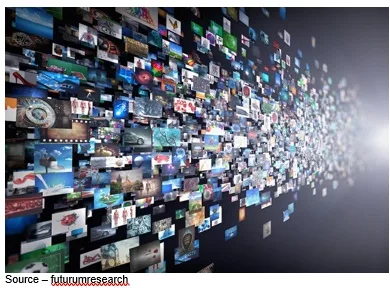 The result could well be a peak for PeakTV as service providers move forward aggressively to entice viewers nationally and internationally despite the short-term global economic conditions.
The result could well be a peak for PeakTV as service providers move forward aggressively to entice viewers nationally and internationally despite the short-term global economic conditions.
It’s a vicious cycle.
Studios/services need to continue to invest in new, unique content to attract more viewers.
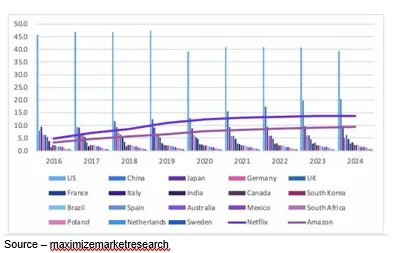
At the same time, they must develop a viable and profitable balance between subscription, ad-supported and FAST service that is within the global consumer’s total entertainment budget.

That means developing budget tiers that will enable consumers to determine their own level of expenditure for their personal/home entertainment.
All of this is the easy part and doesn’t really address the worsening problem … too much content across too many providers.
Hey, we enjoyed Netflix’s The Sandman. Disney +’s She-Hulk: Attorney at Law was okay. HBO Max’s The Princess was a thoughtful look back at Diane’s trials/tribulations. Amazon Prime Video’s A League of Their Own was a great look back at a film that sorta grew on you the first time. Ulu’s Prey was a killer visit to the past of Arnold’s Predator to see a native American woman go toe to toe with a hunter from … somewhere.
There were a number of shows/movies we thought would be interesting to watch on SVOD, AVOD, FAST sources.
The problem was that it took 15-20 minutes to find out exactly where the piece was, we wanted to watch now.

Allan McLennan, Chief Executive, PADEM Media Group, noted, “People don’t really care who is distributing the content to them or whether it’s on a subscription or ad-supported service. They simply want what they want, when they want it with as few clicks as possible.”
Achieving it is nothing new.
McLennan pointed out that the industry has been using sophisticated MAMs (Media Asset Management) systems for years to quickly and easily locate and monetize content.
“Taking the next step to deliver what the viewer wants is just the next logical step,” he noted.
In a relatively short period of time tech, studio and content providers have proven the viability of and demand for a wide range of content for viewers when they want it and on the screen in front of them.
Now is the time for the streaming industry to move into phase two, creating viewing experiences that reflect people’s interests and preferences.
Tech-based providers like Netflix, Amazon and Apple have had a head start on this because they’ve built their businesses on the wealth of data provided by folks.
Their goals are to select, develop and offer every viewer a seamless, customized viewing experience that produces a higher engagement rate and increased viewer/subscriber retention to build a long-term relationship between the provider and the user.
“Studios and content creators can develop similar results if they focus on the subscribers/viewers rather than what’s in their pipeline and library,” McLennan noted.
“The third phase of the streaming evolution will be to go back to the future and provide single bundles of viewing options – not of networks but services (subscription and ad-supported).”
Turn on your viewing screen and immediately be presented with movies/shows you are or may be interested in.
“Services such as Comcast/Sky, China Telecom, China Unicom, Spectrum, Bell Canada, AT&T, and Verizon could be tomorrow’s bundled service providers,” he predicted.
No hunting, just scrolling through titles, trailers, reviews until you find the movie/show that interests you … now!
Or, four-five come up on your screen and say “Hey, think you’re going to like one of us … no pressure, just sayin.”

All the industry needs to do is follow Lady Bug’s advice on the fast-moving Bullet Train, “Have the courage to listen.”
We agree, “It’s a lot to process,” but it’s what consumers want.
# # #
Andy Marken – [email protected] – is an author of more than 700 articles on management, marketing, communications and industry trends in media & entertainment, as well as consumer electronics, software and applications. An internationally recognized marketing/communications consultant with a broad range of technical and industry expertise in storage, storage management and film/video production fields; he has an extended range of relationships with business, industry trade press, online media and industry analysts/consultants.